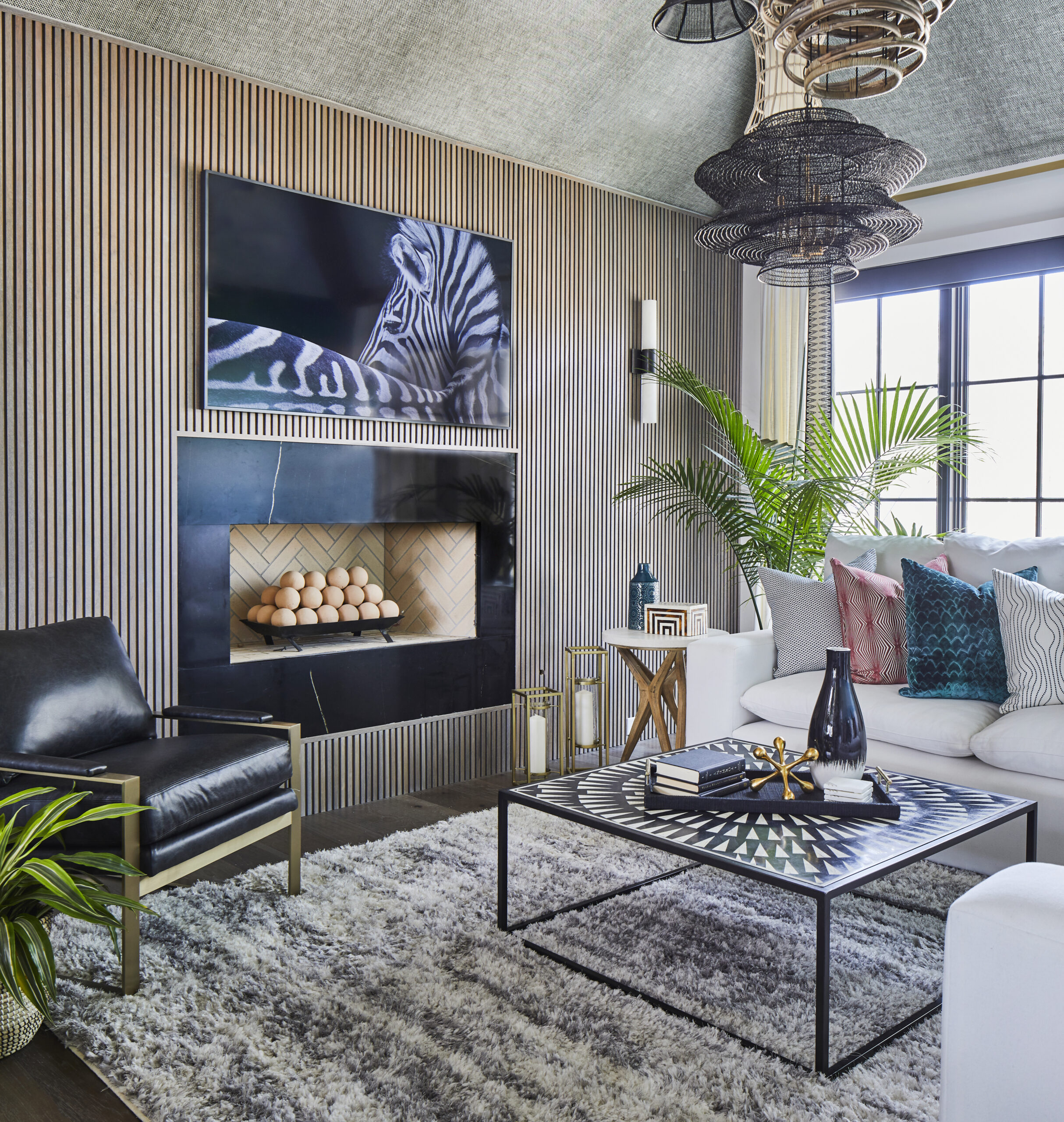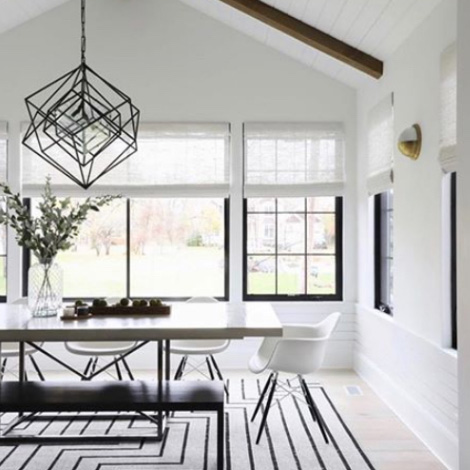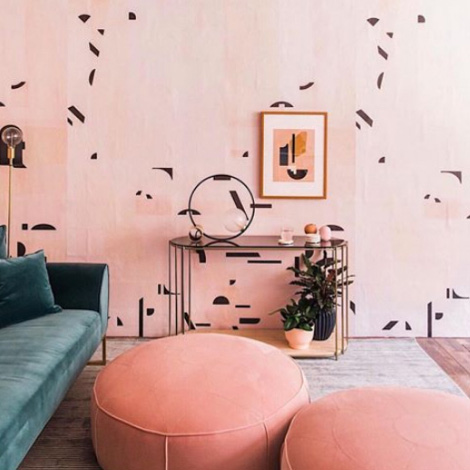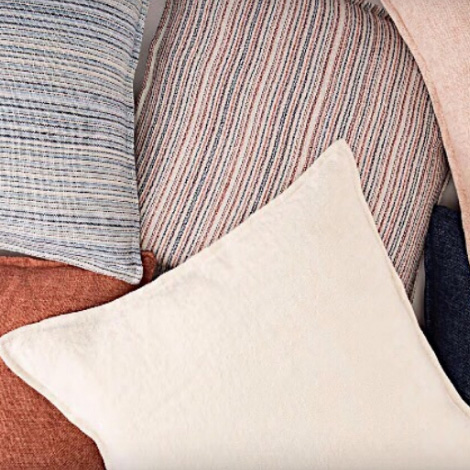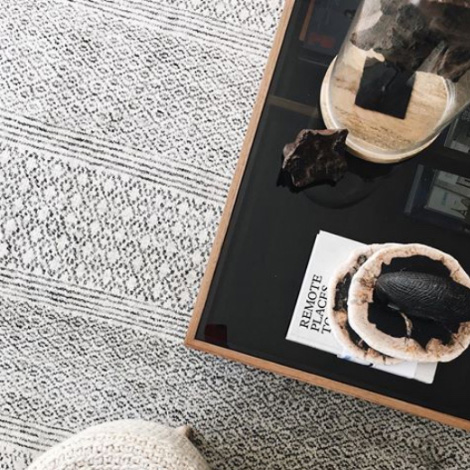In the past few years, we’ve all spent more time at home. Guest rooms have been transformed into meditation dens, closets have become hidden offices, and family rooms have received much-needed facelifts. Bespoke design is key, but a stud-up overhaul isn’t always necessary.
From where they’re sourcing untapped inspiration and on-the-rise renovation trends to addressing ever-evolving client needs and the Jaipur Living rugs they’re buying, design insiders Giana Shorthouse, Kelli Lamb, Anne Sage, and Melissa Lee get real about the state of the industry.
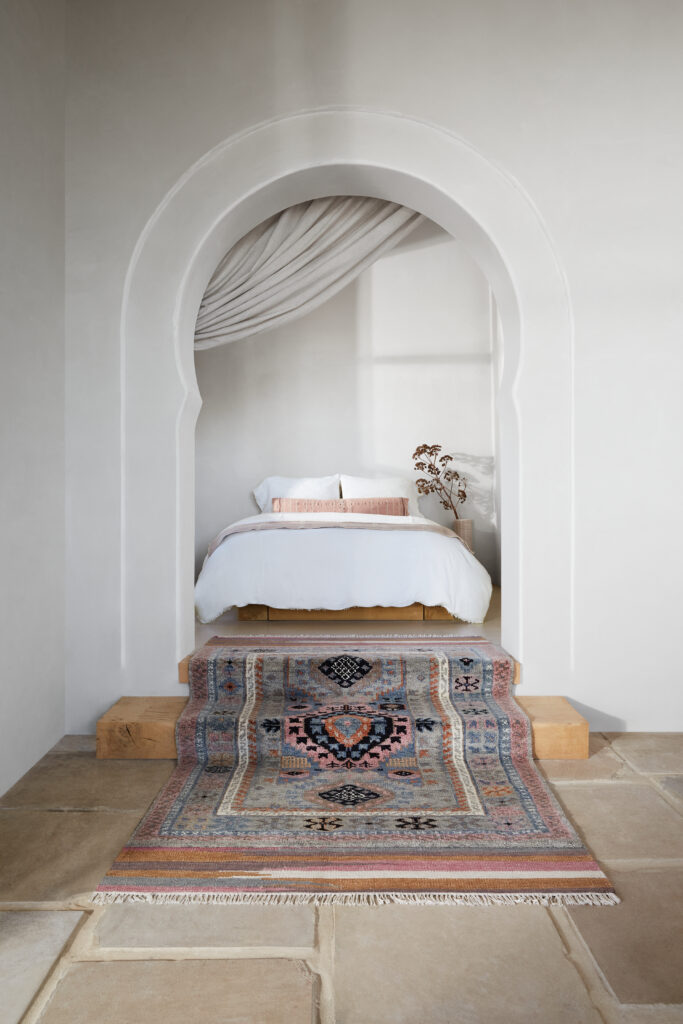
Jaipur Living‘s artisan-made, hand-knotted Asena collection highlights stand-out architectural elements.
Details Reign
You heard it here first: “Gone is the white box home,” declares author and interior designer Anne Sage. Pointing to a growing interest in layered architectural details, Southern California-based Sage lists arches and curves, statement stonework, and intricate millwork among her top trends.
“Arches and curves have been slowly gaining momentum in the past couple of years and now they’re reaching a fever pitch,” she says. New build or newly renovated homes are filled with arched doorways, barrel ceilings, spiral stairs, scalloped vanity backsplashes, and reeded cabinet doors according to the interior designer.
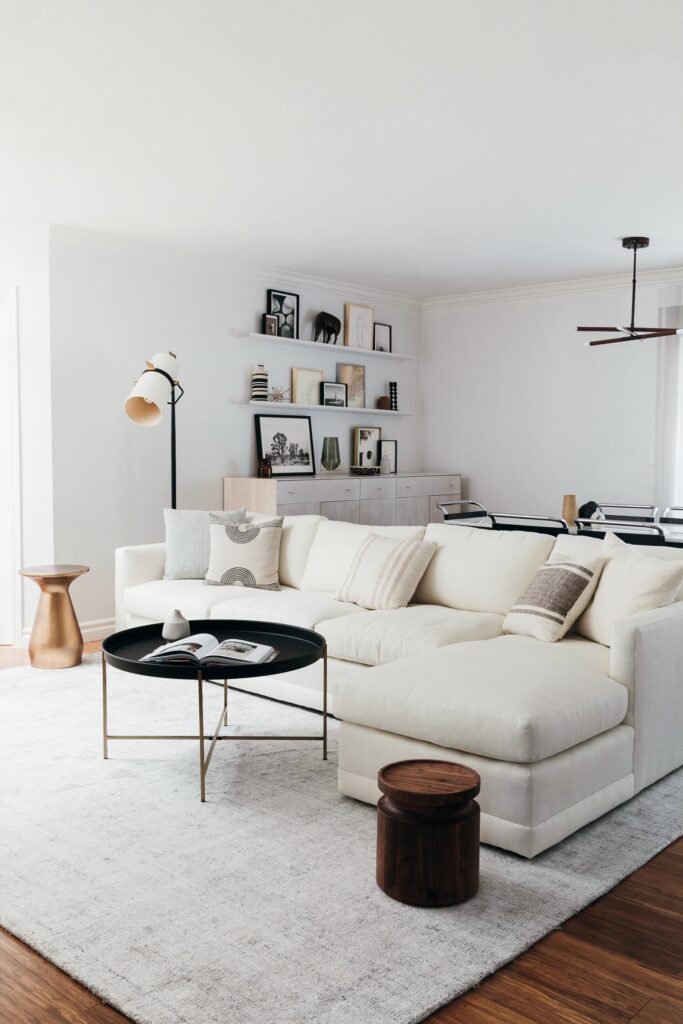
The Cambridge collection styled by Anne Sage. Photo by Monica Wang Photo
When it comes to stone countertops and backsplashes, showstopping veining is here to stay, but, Sage notes, “renovators are finding even more ways to make a dramatic statement with stone. And the drama continues on the walls with heritage-inspired millwork. “Renovators are looking for more elaborate baseboards and crown moldings, floor-to-ceiling cabinetry in rooms other than the kitchen, frame molding on walls, coved and coffered ceilings, and historical materials like plaster,” she says. Insider’s tip: Sage recommends Roman clay, lime wash, and select plaster finishes—think the fireplace surround—to add depth and Old-Warm charm at a more reasonable price.
See also: 4 Design Resolutions To Take On The New Year
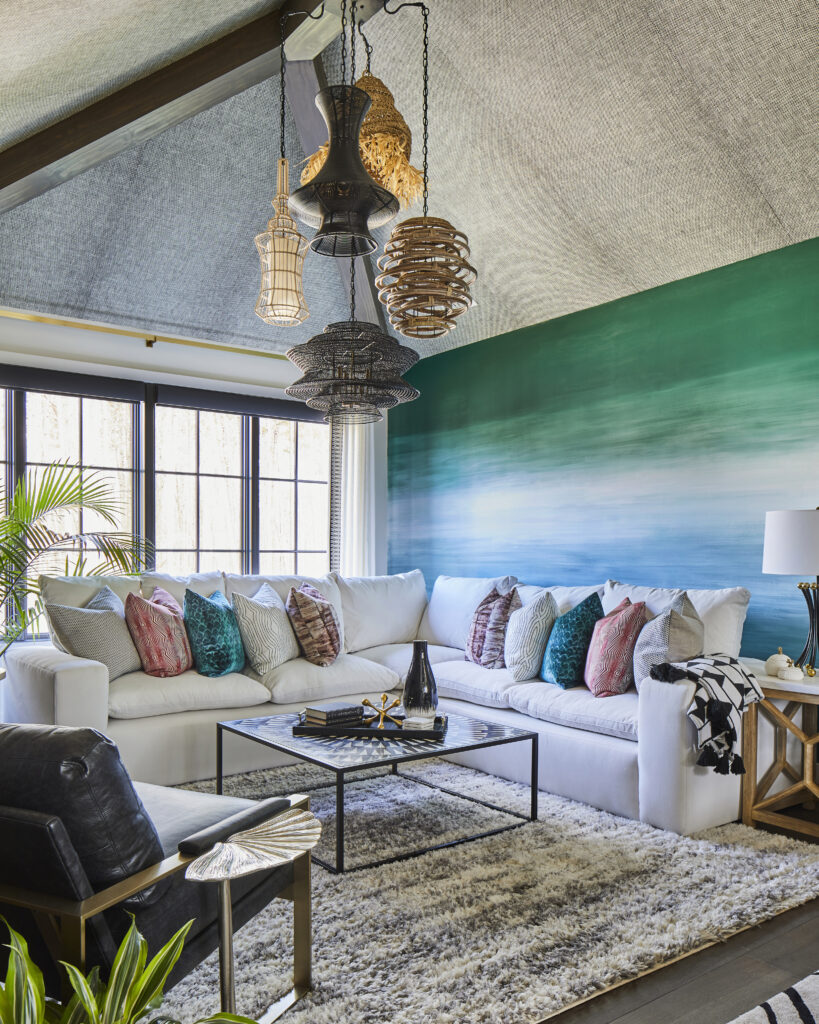
A room by New South Home featuring the Lyra collection from Jaipur Living. Photo by Laurey Glenn
Color Story
Melissa Lee, principal designer of Charlotte, N.C.’s New South Home, dresses her clients’ renos in memorable splashes of color. “We’re seeing a relaxed modern vibe with more saturated color stories,” she says. “Our clients prefer to keep key investment pieces neutral, but are willing to go bold with a fun wallpaper, artwork, or paint colors to create a home that is different from their friends a neighbors.”
Adds Kelli Lamb, editorial director of RUE MEDIA, “color has made a big comeback, especially in kitchens and bathrooms. I love the look of an all-neutral space, but it’s fine to see pattern and color flood the industry once again.”
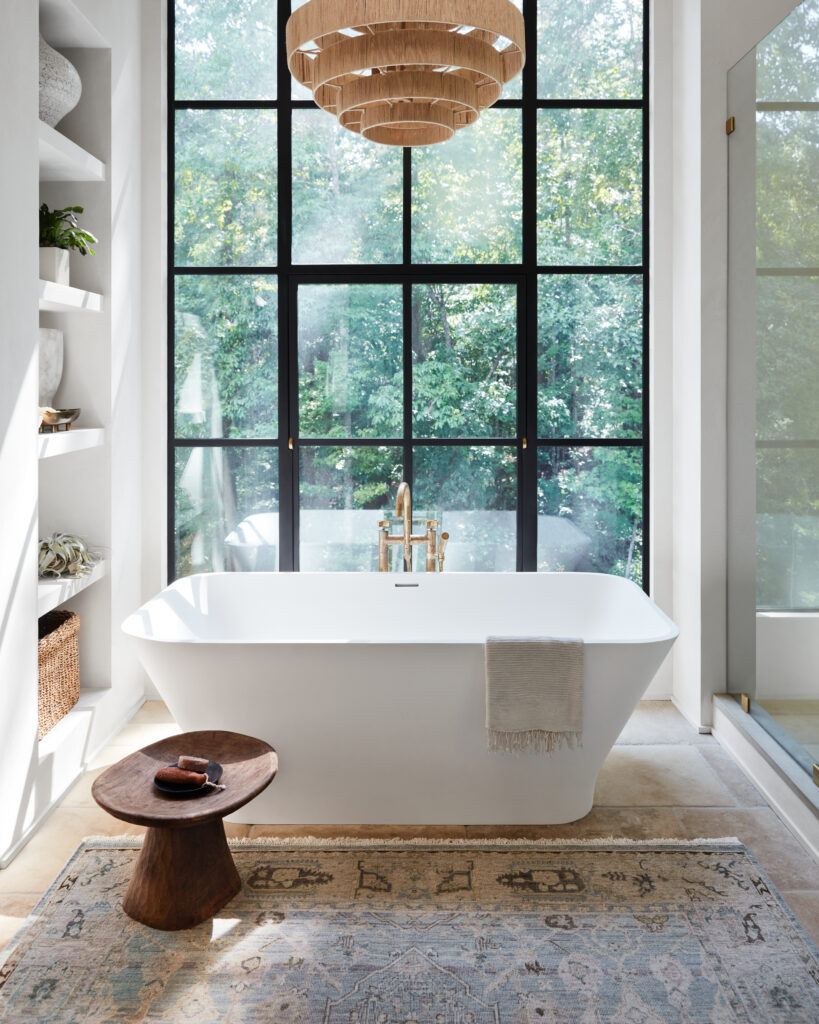
Spa-like bathrooms—like this one, which feature the Someplace In Time collection—are popular in renovations.
So Long, Open Concept
Open concept has reigned over interior design for long enough. And with more time spent at home comes the growing need for additional privacy. Cue the compartmentalization. “I’ve noticed a move away from the ever-popular open-concept floor plan,” says Lamb. “Folks are utilizing every corner of their homes, so dedicated offices and libraries, tech-free sitting areas, and dedication to beautiful private spaces—bathrooms and bedrooms that have a hotel or spa-like quality—are big right now.”
See also: 3 Design Pros Reveal Their Most-Asked Client Questions
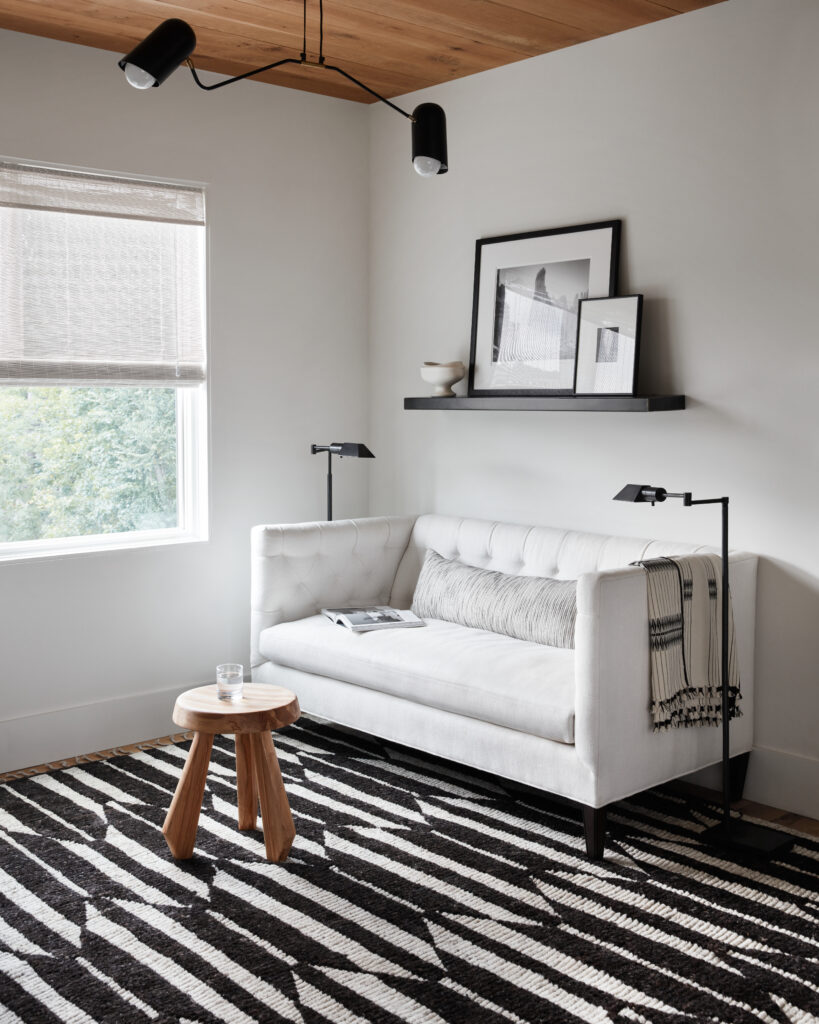
Giana Shorthouse names Jaipur Living‘s Keoka collection among her favorite rugs. “It’s a more modern version of a classic Moroccan rug, but with really graphic lines and still has the texture that I love so much,” she says.
Adaptive Design
Whether a child or parent has moved in or you’re conducting school from the kitchen table, multiuse spaces are a necessity. It’s all about that magical pivot as we approach everyday life. “With the past two years behind us, a lot more of us are rethinking how we use our spaces and how to maximize their potential,” says Giana Shorthouse, interior designer, prop stylist, and the creative force behind Atlanta’s Studio Giana. Her examples? “Think a weekday workspace that becomes a Zen in-home yoga studio in the evenings or a casual living space that converts into an artist studio. The possibilities for multiuse,” she says, “are endless.”
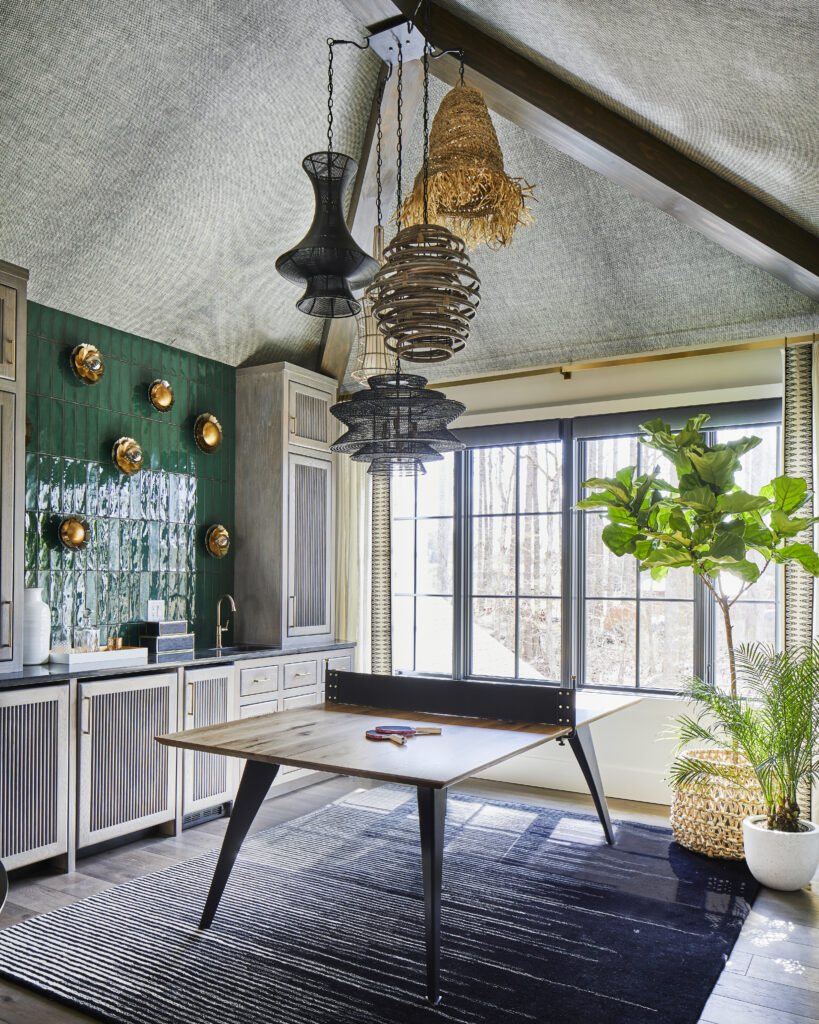
The best-selling Bristol collection styled by New South Home. Photo by Laurey Glenn
Adds Lee, “Spaces that have multi-function that allow clients to use them differently during the day and at night. The desire to completely change how someone can use a room or apartment will continue to evolve as more people continue to spend time at home but don’t have the ability to expand their current footprint.”
Through Lamb’s lens, home gyms, coffee and bar stations, and libraries have flooded RUE’s editorial submissions. “I think people will continue to invest in their outdoor spaces,” she adds, “be it dining areas with custom barbecues or pizza ovens, or comfortable, durable seating areas with cozy outdoor rugs and textiles. People are seeking to create spaces that they want to enjoy, spend time in when travel isn’t an option, and truly live in.”
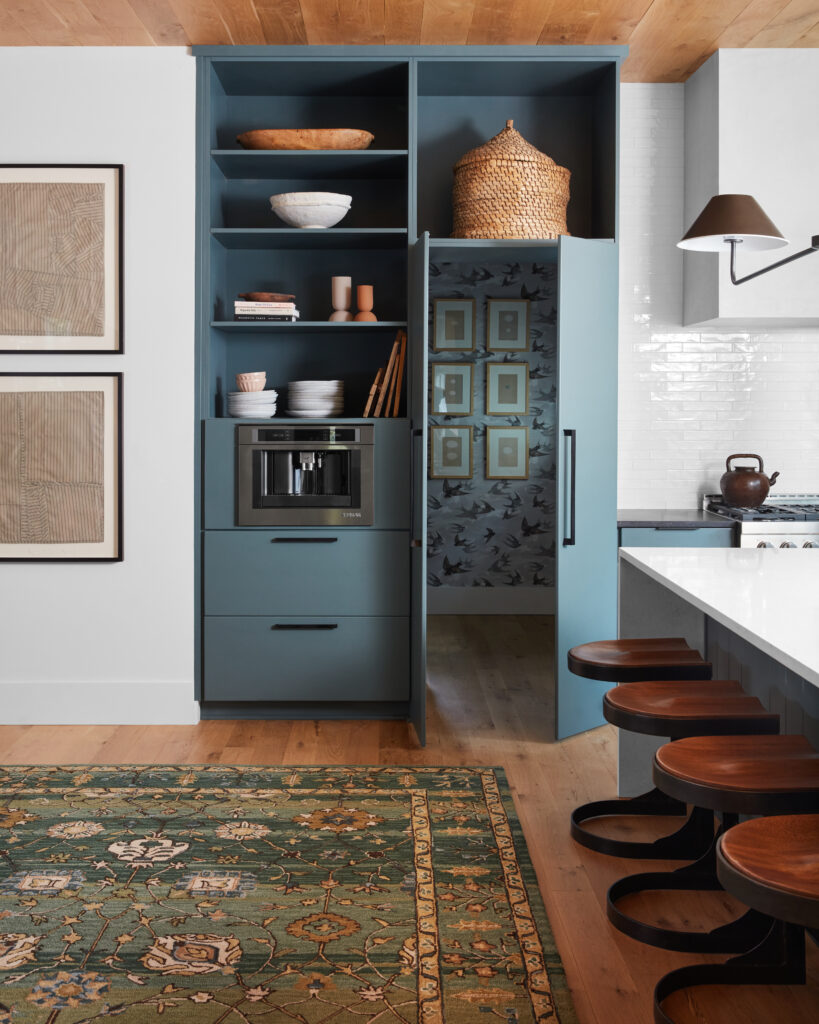
The hand-tufted Cardamom collection from Jaipur Living
Bespoke Style
Customizations come in many forms in the interiors space, from custom colors and upholstery to digital offerings and holistic design. “The great thing about designers is their ability to customize a home, so unique requests and customization are what we do every day,” says Lee. “At New South Home, we are expanding our vendor matrix to include a few new resources that have unique one-of-a-kind products so that we can offer a wide variety of design styles and products that allow us to customize a home based on our clients’ personal style.”
With the increase in tech-based services comes more interior design savvy clients. “As in every industry,” says Sage, “consumers are more informed than ever about what’s possible in home design and renovations—and in particular how the home can impact the health and well-being of its inhabitants. For example, I’ve been fielding more requests for customizations based on ergonomics and last year installed both a kitchen and home office designed with my taller-than-average clients in mind.”
Client relations, of course, remain top of mind. “I am seeing more designers expanding their offerings to include a focus on at-home wellness as well as concierge services for their clients,” says Shorthouse. “It’s a great way to continue the designer-client relationship and keep the design conversation going beyond the finished project.”
See also: How To Brand Your Interior Design Business
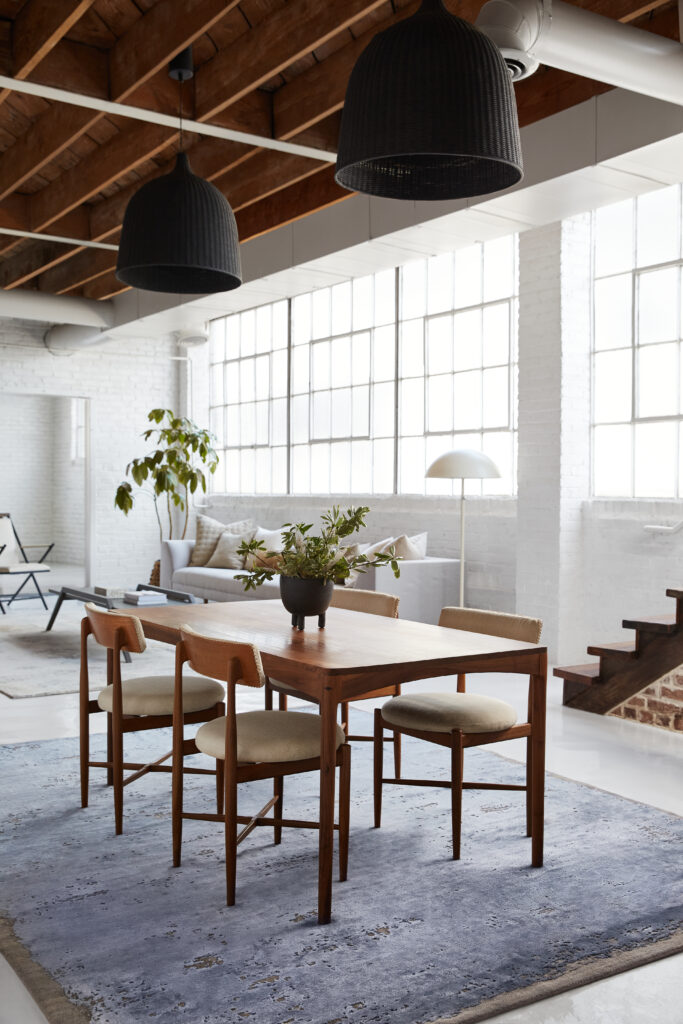
The Urban Pause collection is available exclusively to interior designers through the Designer Edit program.
Get The Look
Inspiration comes in many forms and building a library of unique ideas is essential to any successful interior design business. Here, our design pros let us in on their secret sources.
Kelli Lamb
“There’s something special about sitting down with a design magazine or book—without news notifications popping up on your phone. For those in a rut, it’s always wonderful to unplug for a few hours and spend time with your favorite publications. (And I’m not just saying that as a magazine editor!) Also, for nights you just need to check out, inspiration abounds in some of the top television shows out right now. Both Succession and The Morning Show are ripe with interior design inspiration and ideas. It’s a sneaky way to get inspired while unwinding at the end of a long week.”
Giana Shorthouse
“Social media. I find some of the wildest things on Instagram and TikTok. As much as we don’t want to get sucked in, it’s where trends are happening in real time, so staying tapped in can present some really cool ideas. The other way of finding really great inspiration is through some of the various art and design fairs. Think Dutch Design Week, Design Miami, or Collective Design in New York. And what’s cool is that some of the fairs stream their shows or panels online, so you don’t even have to leave your house to get inspired.”
Anne Sage
“This is a tricky one, since so many of us used to rely on experiences like travel or going to a beautifully designed new shop or restaurant for inspiration. Thankfully we can still travel virtually through the powers of the internet, so I love looking to designers and publications in Australia to see what’s coming down the pipeline. Everything trending now in the U.S. was hot several years ago there. Favorites to follow include Three Birds Renovations, Arent&Pyke, and Est Living.
Melissa Lee
“TikTok and Instagram have grown tremendously in the past five years with so many designers, builders, and DIYers posting videos and photos of fun and new ideas. We are constantly searching for new accounts and ideas based on photos and videos of projects that are creative and different. We also find that tradeshows are coming back into play and always find great new ideas and resources that we would not have found online by attending these and carving out time to walk around and explore.”
Next story

